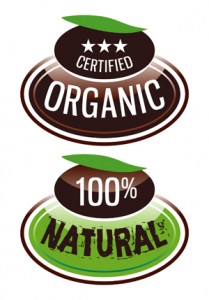Most of us have the best of intentions when it comes to our food choices. But unless we all learn to read each entire food ingredient label, we will never have a true idea of what we are really purchasing, eating or supporting with our dollars.
As it turns out, most of what is on the label is marketing hype and splashy design work made only to seduce us into believing the product is healthy. You will see that you have to be very informed in order to find the truth, because labels have fooled even the smartest shoppers.
You have to know how to interpret what the label says to be absolutely certain that you are getting what you want. It is easy to be duped if you do not know what to look for.
“When it comes to processed foods, if it says it is natural, ignore the claim,” says Organic Lifestyle Magazine. “It means nothing. If it says it is organic, it does not have to be 100 percent organic, unless it says it is. Remember, processed foods can be labeled organic if only 80 percent of the ingredients are organic. And organic junk food is still junk food.”
The best advice is to simply not eat any processed foods. But if you must, a short list of ingredients and phrases to avoid includes: artificial colors, artificial flavorings, artificial sweeteners, high-fructose corn syrup, sodium nitrates or nitrites, and others.
When it comes to genetically modified (GM) foods, the FDA does not require them to be labeled. This is because the FDA has decided that the consumer does not care if the food is more resistant to cold weather, hot weather or contains the herbicide Roundup®.
Some consumers may not be concerned with eating “Frankenfood.” But if you are, here is how to determine whether the fruits and vegetables you are buying are of the GM variety.
For conventionally grown fruits, grown with chemicals, the price look-up (PLU) code on the sticker consists of four numbers. Organically grown fruit has a five-numeral PLU prefaced by the number 9. Genetically engineered fruit has a five-numeral PLU prefaced by the number 8.
For example: The PLU code on a conventionally grown banana would be 4011. An organic banana would be 94011 and a genetically engineered banana would be 84011.
It is especially important to know how to identify the labels now that more than 80 percent of all processed foods in the U.S. are the GM type. Many countries in the European Union and around the world have been banning GM products and produce, including Austria, France, Germany, Greece, Hungary and Luxembourg.
A reminder: Put these PLU numbers in your wallet or purse so that you can access them easily next time you shop.
Sources: Organic Lifestyle Magazine January/February 2011; Huffington Post March 21, 2011; www.mercola.com April 20, 2011; and http://blog.friendseat.com.
Reprinted from AZNetNews, Volume 30, Number 3, June/July 2011.






February 24, 2012
Food